Contents
Guide
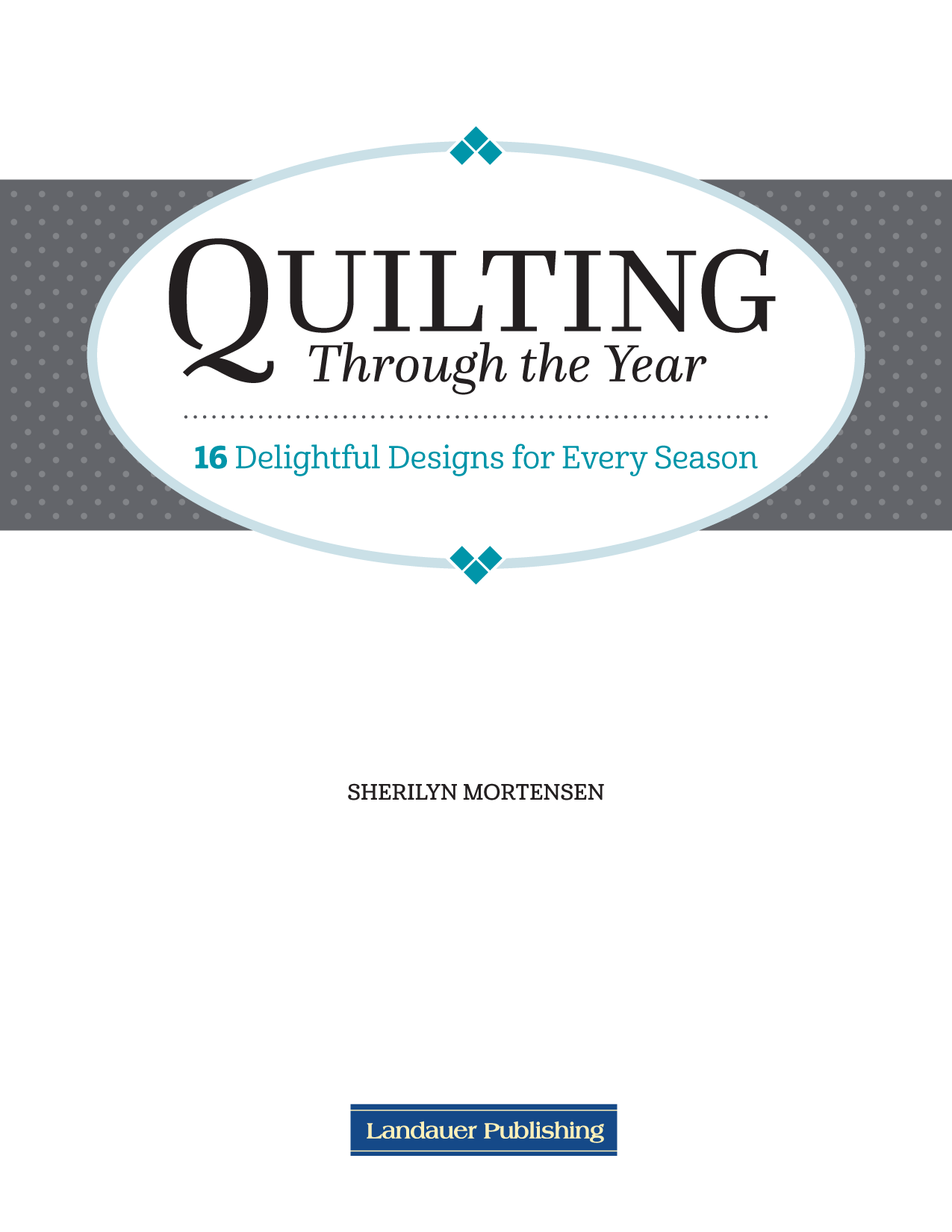 This book is dedicated to my husband, children, grandchildren, and mother. I will forever be grateful for their positive encouragement and support. I couldnt have accomplished this endeavor without them!
This book is dedicated to my husband, children, grandchildren, and mother. I will forever be grateful for their positive encouragement and support. I couldnt have accomplished this endeavor without them!
Freedom quilt, see
Quilting Through the Year Landauer Publishing, www.landauerpub.com, is an imprint of Fox Chapel Publishing Company, Inc. 2021 Sherilyn Mortensen and Fox Chapel Publishing Company, Inc. 903 Square Street, Mount Joy, PA 17552. All rights reserved.
No part of this book may be reproduced, stored in a retrieval system, or transmitted in any form or by any means, electronic, mechanical, photocopying, recording, or otherwise, without the prior written permission of Fox Chapel Publishing, except for the inclusion of brief quotations in an acknowledged review and the enlargement of the template patterns in this book for personal use only. The patterns themselves, however, are not to be duplicated for resale or distribution under any circumstances. Any such copying is a violation of copyright law. Project Team Editors: Amelia Johanson and Jodi Butler Copy Editor: Sherry Vitolo Designer: Wendy Reynolds Illustrators: Sue Friend and Kerry Bogert Photographers: Jennifer Tarkington (beauty shots), Sherilyn Mortensen (all other photography) ISBN: 9781947163690
eISBN: 9781607658795 Library of Congress Control Number: 2021943159 We are always looking for talented authors. To submit an idea, please send a brief inquiry to acquisitions@foxchapelpublishing.com. Note to Professional Copy Services: The publisher grants you permission to make up to six copies of any quilt patterns in this book for any customer who purchased this book and states the copies are for personal use.
For a printable PDF of the patterns used in this book, please contact Fox Chapel Publishing at , with 9781947163690 Quilting Through the Year in the subject line.
Introduction
I love quilting for every season, which is what inspired me to write this book. In
Quilting Through the Year, youll find a collection of 16 fun and creative designs with projects for winter, spring, summer, and fall. Whether youre looking for a pattern to add seasonal charm to your own home or sewing a gift for a friend or loved one, these beginner-friendly quilt projects boast charming motifs that you will want to return to again and again. Each project, from throws and table toppers to wall hangings and full-sized quilts, is created with traditionally cut geometric piecesno circles or curvesthat are achievable for quilters of every skill level. Yet the visuals give the illusion of curves without the challenge of sewing them.
Smaller motifs are often repeated, so once youve made one block, the process is a snap to master. Other designs piece together shapes in different ways to create unique figures. From a scarfed snowman to a gorgeous daisy field, these designs capture the most beloved features of every season in a truly delightful way that will make you want to harness the joy of the season with fabric and thread. Sherilyn  The author in her studio.
The author in her studio.  Follow the Sun quilt, see
Follow the Sun quilt, see 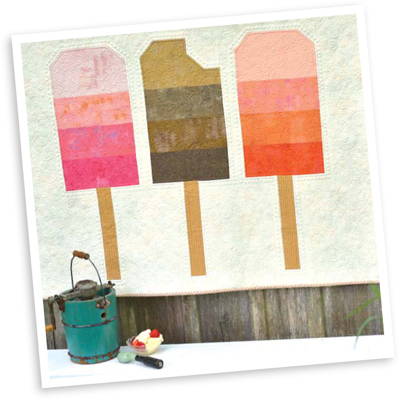 Summers Delight quilt, see
Summers Delight quilt, see
Contents
Quilting Basics
Tools
SEWING MACHINE WITH A " (0.6CM) FOOT
All of the projects in this book can be made with a sewing machine with a " (0.6cm) quilting foot and basic straight-line sewing capabilities.
HIGH-QUALITY THREAD
Using a high-quality 50wt cotton thread or cotton-covered polyester thread for piecing makes a big difference in the look and integrity of your quilting projects.
HIGH-QUALITY THREAD
Using a high-quality 50wt cotton thread or cotton-covered polyester thread for piecing makes a big difference in the look and integrity of your quilting projects.
White, cream, or light gray are good neutral colors that usually blend well with most fabrics. Superior Threads and Aurifil are my favorite brands.
SCISSORS
Proper cutting is key with quilting. I highly recommend investing in a pair of good-quality sewing scissors and little snips, which come in handy when sewing. Kai is my brand of choice.
STRAIGHT PINS
I like to use long, thin straight pins for quilting and sewing.
Fortunately, there are many great brands to choose from, so you can choose the ones that work best for you.
IRON
Pressing seam allowances as you work helps prevent little bits of fabric from getting lost within seam allowances, which can create distortions and make your finished quilt blocks smaller than they should be. Additionally, careful pressing can also save time when assembling your quilt because the blocks will fit together as they should. Use a quality steam iron, preferably cordless.
IRONING BOARD/MAT
A basic ironing board or mat is sufficient for quilting and sewing.
SPRAY STARCH
Spray starch helps seams and quilt blocks lay flatter, and can add a little stiffness to your fabric.
SPRAY STARCH
Spray starch helps seams and quilt blocks lay flatter, and can add a little stiffness to your fabric.
Best Press or Flatter Brands make great spray starches. Tip: Try to avoid starches with color dyes, which can run.
STRAIGHT EDGE QUILTING RULERS
As I previously mentioned, proper cutting is key for quilting. I like to use rulers that are 5" x 15" (12.7cm x 38.1cm) or larger, preferably from Missouri Star Quilt Co.
QUILTING SQUARE-UP RULERS
These rulers are ideal for helping you make perfect squares. Use a square-up ruler thats 6" (15.2cm) or larger.
Sew Square Rulers by Sew Kind of Wonderful are my first choice.
ROTARY CUTTER & CUTTING MAT
My favorite rotary cutter is the OLFA 45mm Ergonomic Rotary Cutter-RTY-2/DX paired with the Gypsy brand Rotary Blade Guards. It is available from Checker Distributors and helps me cut perfectly straight lines every time and avoid cut fingers. Use a 17" x 23" (43.2cm x 58.4cm) cutting mat or larger for trimming blocks and more.


The Robin Egg Blue quilt uses half square triangles and corner flip units to create the illusion of curved pieces.
Half Square Triangles
Half Square Triangles (HSTs) are one of the most common and versatile quilting blocks.
They can be used on their own or as a foundation for more complicated designs. HSTs are used extensively throughout this book. To make a pair, you will need (2) fabric squares in different fabrics that are the exact same size. Draw a diagonal line from corner to corner on the wrong side of one fabric square. Place one square on top of the other with right sides together and edges aligned. 

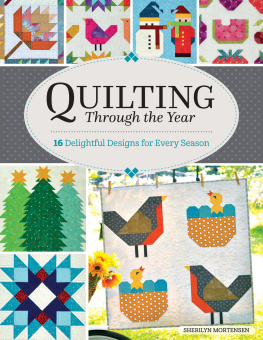
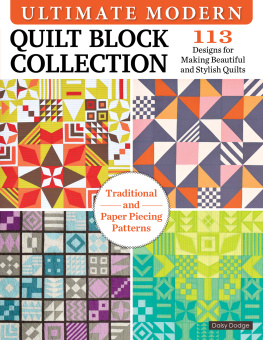

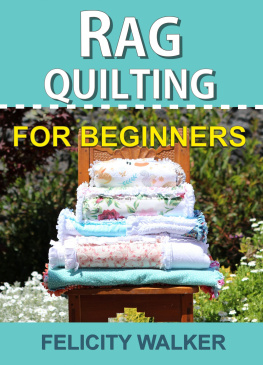
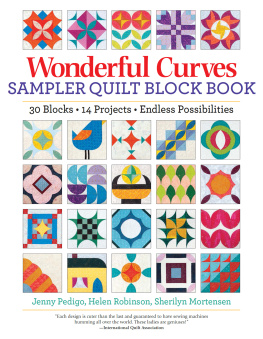

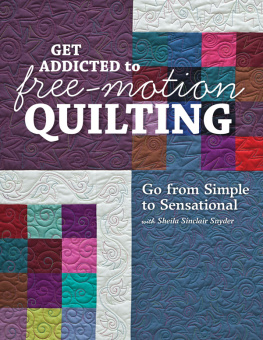
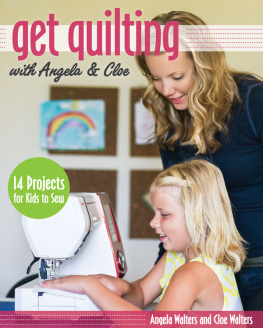


 This book is dedicated to my husband, children, grandchildren, and mother. I will forever be grateful for their positive encouragement and support. I couldnt have accomplished this endeavor without them!
This book is dedicated to my husband, children, grandchildren, and mother. I will forever be grateful for their positive encouragement and support. I couldnt have accomplished this endeavor without them! Freedom quilt, see Quilting Through the Year Landauer Publishing, www.landauerpub.com, is an imprint of Fox Chapel Publishing Company, Inc. 2021 Sherilyn Mortensen and Fox Chapel Publishing Company, Inc. 903 Square Street, Mount Joy, PA 17552. All rights reserved.
Freedom quilt, see Quilting Through the Year Landauer Publishing, www.landauerpub.com, is an imprint of Fox Chapel Publishing Company, Inc. 2021 Sherilyn Mortensen and Fox Chapel Publishing Company, Inc. 903 Square Street, Mount Joy, PA 17552. All rights reserved.  The author in her studio.
The author in her studio.  Follow the Sun quilt, see
Follow the Sun quilt, see  Summers Delight quilt, see
Summers Delight quilt, see
 The Robin Egg Blue quilt uses half square triangles and corner flip units to create the illusion of curved pieces.
The Robin Egg Blue quilt uses half square triangles and corner flip units to create the illusion of curved pieces. 